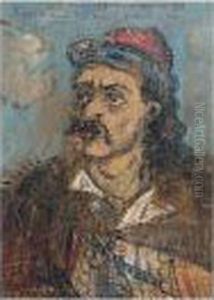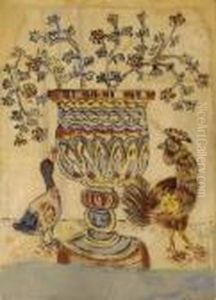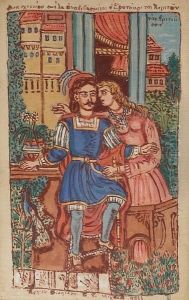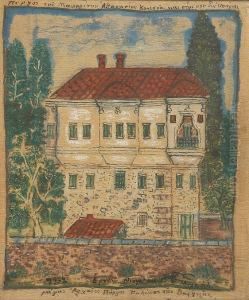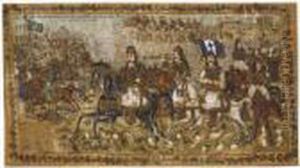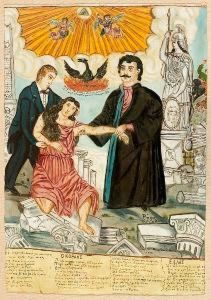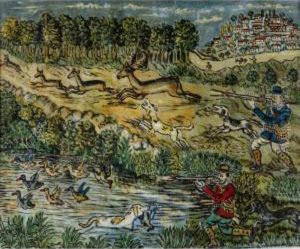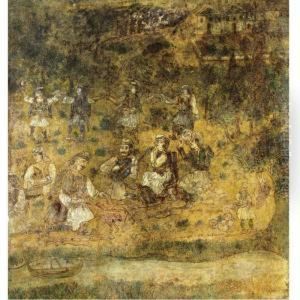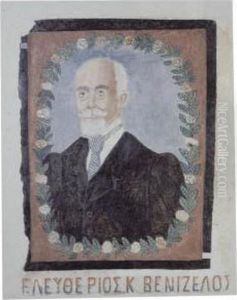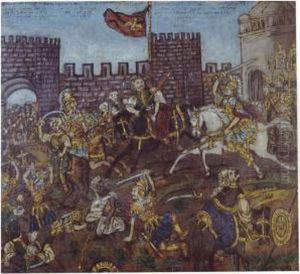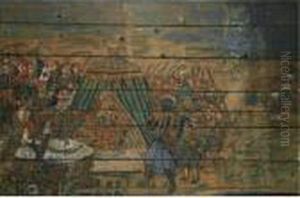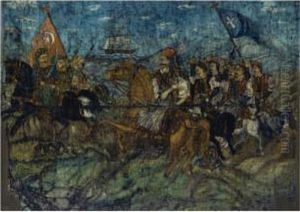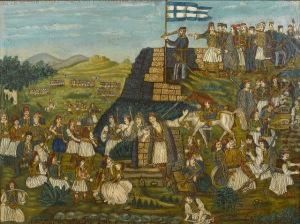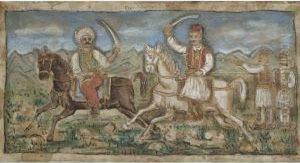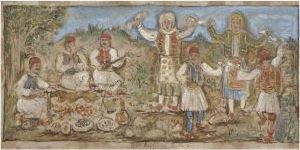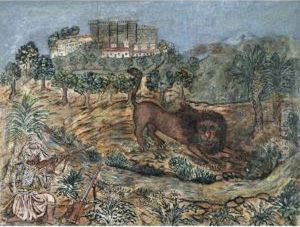Hadjimichail Theophilos Paintings
Theophilos Hatzimihail, better known simply as Theophilos, was a major figure in Greek folk art, born in 1870 in the village of Vareia, near Mytilene, on the island of Lesbos, Greece. Despite his significant contribution to Greek cultural heritage, Theophilos led a life marked by poverty and obscurity, only gaining widespread recognition posthumously.
Theophilos was largely self-taught, with his art primarily focusing on Greek history, mythology, and everyday life. He was known for his vibrant use of color and his simplistic, yet expressive, depiction of figures and landscapes. His work embodies the spirit of Greek folk traditions, and he often painted on walls of houses, cafes, and public spaces, sometimes in exchange for food and shelter.
Throughout his life, Theophilos wandered around Greece, from Pelion to Athens, and even to the island of Aegina, leaving behind a trail of murals and paintings. However, it was not until the 1930s, when the Greek art critic and collector Stratis Eleftheriadis (Teriade) discovered his work, that Theophilos gained the recognition he deserved. Teriade organized an exhibition of Theophilos's work in Paris in 1936, two years after the artist's death, introducing his art to an international audience.
Despite his belated recognition, Theophilos's work has left a lasting legacy on Greek art, influencing future generations of artists and being celebrated in numerous exhibitions and collections. His life and art continue to be studied for their contribution to the understanding of Greek cultural identity and folk aesthetics. The Theophilos Museum in Lesbos, established by Teriade, serves as a testament to his life and work, housing many of his paintings and offering insight into the world that inspired him.
